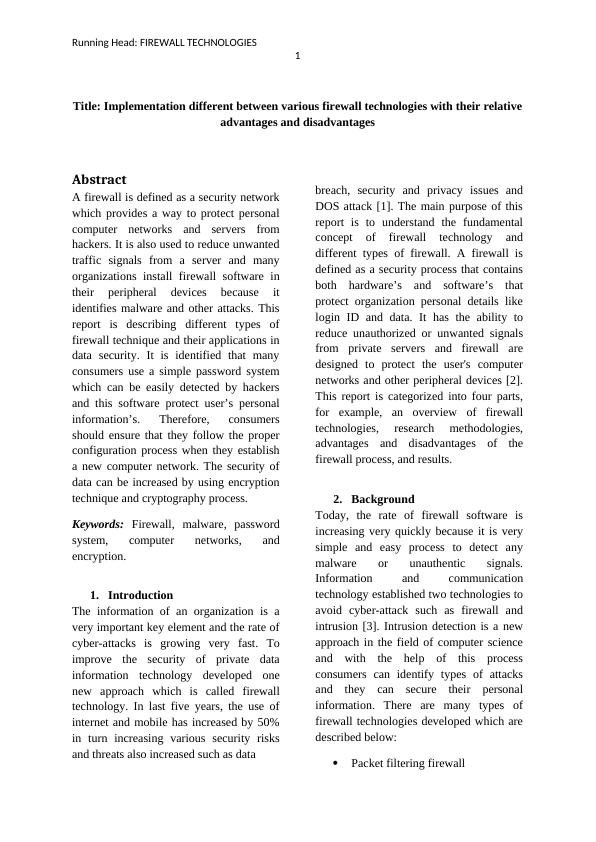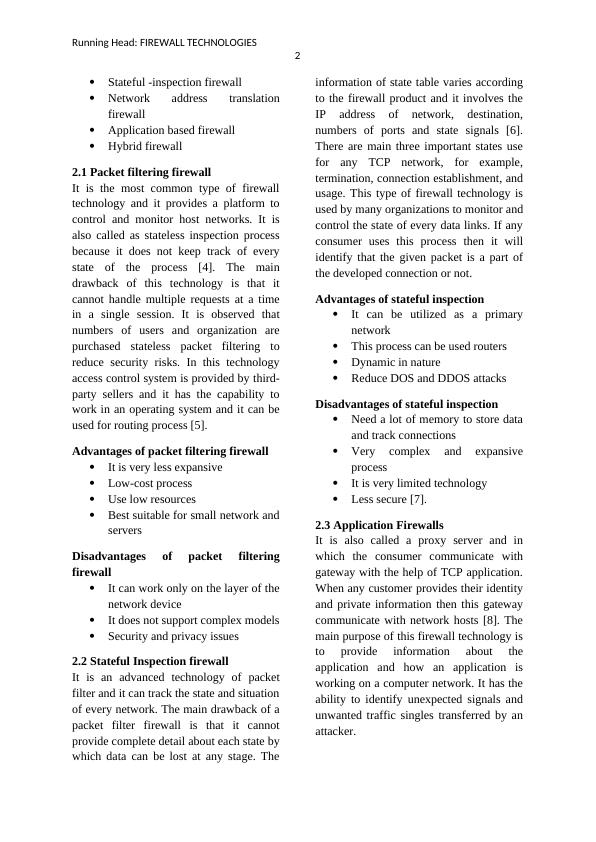Implementation of Different Firewall Technologies: Advantages and Disadvantages
Carrying out a mini-project on a chosen topic related to network security principles and writing an investigative report about it.
6 Pages2344 Words50 Views
Added on 2023-06-04
About This Document
This report explains the working mechanism of firewall technology and their limitations. It describes different types of firewall systems available in the market, including packet filtering, stateful-inspection, network address translation, application-based, and hybrid firewalls. The report also highlights the advantages and disadvantages of each type of firewall technology.
Implementation of Different Firewall Technologies: Advantages and Disadvantages
Carrying out a mini-project on a chosen topic related to network security principles and writing an investigative report about it.
Added on 2023-06-04
ShareRelated Documents
End of preview
Want to access all the pages? Upload your documents or become a member.
Methods to Address Cybersecurity Issues in JL Organization
|13
|2416
|109
Information Systems Security: IT Security Fundamentals, Vulnerabilities, and IBM Security Architecture
|5
|747
|57
Foundation of Cyber Security
|6
|1679
|89
Cyber Security Assignment PDF
|9
|2867
|2114
Healthcare Networks: Architecture, Security Threats and Solutions
|7
|338
|124
Overview of Network Security
|8
|2332
|431



